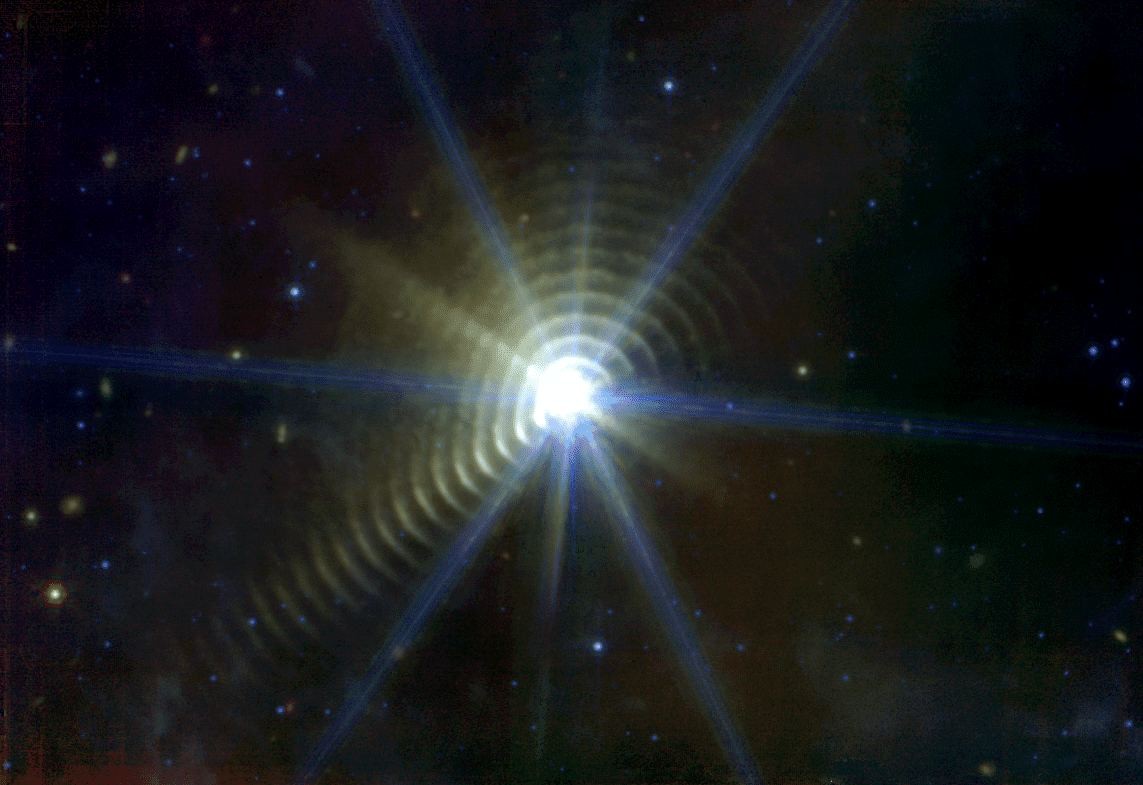Imagine dropping a shining gem in a dark pond, and you might get close to the extraordinary view of WR 140 as seen by JWST. Ripples spread into space from this binary system: vast shells of mostly hydrogen gas that one of the evolved companions has shed, now illuminated by the heat of the stars.
The object in question is a Wolf-Rayet star, a particular class of aged stars that tend to be very hot and very luminous. The most massive known star R136a1 is a Wolf-Rayet star. WR 140 is among the brightest of this type visible in the Northern hemisphere and it is a primary target for infrared observations – hence why it is so exciting to study this system and similar ones with JWST.
But red curvy-yet-boxy stuff is real, a series of shells around WR140.
Actually in space. Around a star.
The system is made of two stars. One is a Wolf-Rayer 20 times the mass of our Sun. The second one is a bright hot star still burning hydrogen with a mass of 50 suns. They orbit each other every 7.9 years on a very elliptical orbit. During their highly eccentric motion, their stellar winds collide, changing the system’s infrared emission and carving the ripple structure we can see.
The observations of the system were part of a project conducted by Ryan Lau, from the Institute of Space and Astronautical Science in Japan. The images were processed by two independent citizen scientists, Melina Thévenot and Judy Schmidt – the latter has also been behind some of the incredible pictures of galaxies from JWST, plus the gorgeous views of Jupiter.
Source Link: Stunning New JWST Image Show The Intricate Shells Of An Aged Star
